Potřebujeme váš souhlas k využití jednotlivých dat, aby se vám mimo jiné mohly ukazovat informace týkající se vašich zájmů. Souhlas udělíte kliknutím na tlačítko „OK“.
ASTM D4809-13
Standard Test Method for Heat of Combustion of Liquid Hydrocarbon Fuels by Bomb Calorimeter (Precision Method)
Automaticky přeložený název:
Standardní zkušební metoda pro spalné teplo z kapalných uhlovodíkových paliv podle kalorimetru bomby (Precision Method)
NORMA vydána dne 1.5.2013
Informace o normě:
Označení normy: ASTM D4809-13
Poznámka: NEPLATNÁ
Datum vydání normy: 1.5.2013
Kód zboží: NS-28684
Počet stran: 10
Přibližná hmotnost: 30 g (0.07 liber)
Země: Americká technická norma
Kategorie: Technické normy ASTM
Kategorie - podobné normy:
Anotace textu normy ASTM D4809-13 :
Keywords:
aviation turbine fuels, bomb calorimeter, heat of combustion, hydrocarbon fuels, ICS Number Code 75.160.20 (Liquid fuels)
Doplňující informace
| Significance and Use | ||||||||||||||||||||||||||||
|
5.1 The heat of combustion is a measure of the energy available from a fuel. A knowledge of this value is essential when considering the thermal efficiency of equipment for producing either power or heat. 5.2 The mass heat of combustion, that is, the heat of combustion per unit mass of fuel, is measured by this procedure. Its magnitude is particularly important to weight-limited vehicles such as airplanes, surface effect vehicles, and hydrofoils as the distance such craft can travel on a given weight of fuel is a direct function of the fuel's mass heat of combustion and its density. 5.3 The volumetric heat of combustion, that is, the heat of combustion per unit volume of fuel, can be calculated by multiplying the mass heat of combustion by the density of the fuel (mass per unit volume). The volumetric heat of combustion, rather than the mass heat of combustion, is important to volume-limited craft such as automobiles and ships, as it is directly related to the distance traveled between refuelings. |
||||||||||||||||||||||||||||
| 1. Scope | ||||||||||||||||||||||||||||
|
1.1 This test method covers the determination of the heat of combustion of hydrocarbon fuels. It is designed specifically for use with aviation turbine fuels when the permissible difference between duplicate determinations is of the order of 0.2 %. It can be used for a wide range of volatile and nonvolatile materials where slightly greater differences in precision can be tolerated. 1.2 In order to attain this precision, strict adherence to all details of the procedure is essential since the error contributed by each individual measurement that affects the precision shall be kept below 0.04 %, insofar as possible. 1.3 Under normal conditions, the test method is directly applicable to such fuels as gasolines, kerosines, Nos. 1 and 2 fuel oil, Nos. 1-D and 2-D diesel fuel and Nos. 0-GT, 1-GT, and 2-GT gas turbine fuels. 1.4 Through the improvement of the calorimeter controls and temperature measurements, the precision is improved over that of Test Method D240. 1.5 The values stated in SI units are to be regarded as standard. No other units of measurement are included in this standard. 1.6 This standard does not purport to address the safety concerns, if any, associated with its use. It is the responsibility of the user of this standard to establish appropriate safety and health practices and determine the applicability of regulatory limitations prior to use. For specific warning statements, see Section 7, 10.6, A1.7.1 and Annex A3. |
||||||||||||||||||||||||||||
| 2. Referenced Documents | ||||||||||||||||||||||||||||
|
Podobné normy:
Historická
1.5.2011
Historická
1.10.2010
Historická
1.12.2012
Historická
1.5.2011
Historická
1.10.2010
Historická
15.11.2013
Doporučujeme:
Aktualizace technických norem
Chcete mít jistotu, že používáte pouze platné technické normy?
Nabízíme Vám řešení, které Vám zajistí měsíční přehled o aktuálnosti norem, které používáte.
Chcete vědět více informací? Podívejte se na tuto stránku.


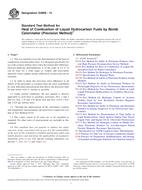
 ASTM D3341-05(2011)..
ASTM D3341-05(2011)..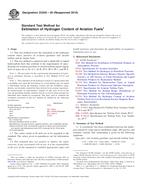 ASTM D3343-05(2010)..
ASTM D3343-05(2010)..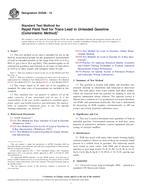 ASTM D3348-12
ASTM D3348-12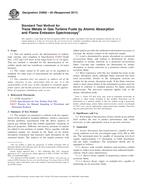 ASTM D3605-00(2011)..
ASTM D3605-00(2011).. ASTM D3606-10
ASTM D3606-10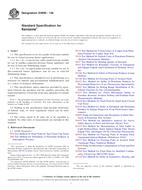 ASTM D3699-13b
ASTM D3699-13b
 Cookies
Cookies
